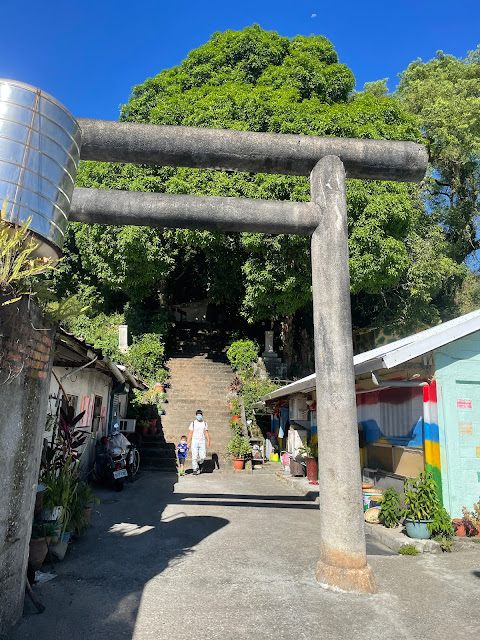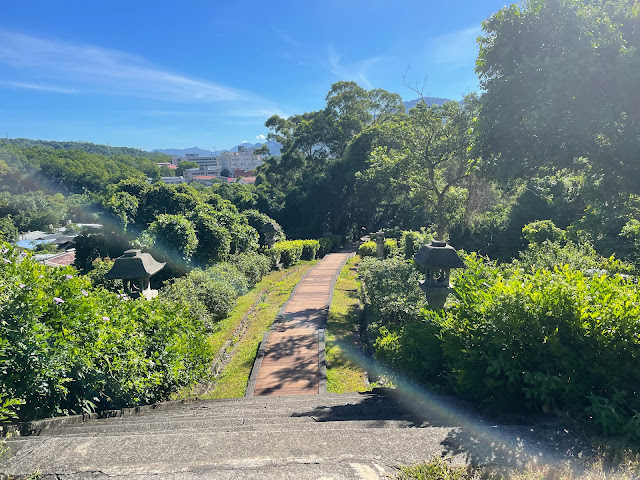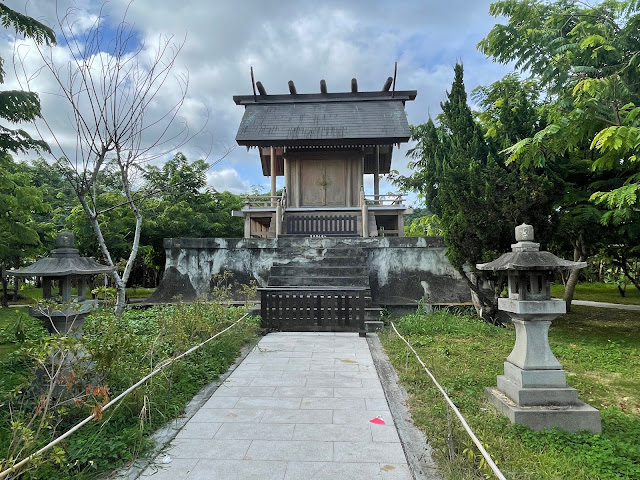2022/07/19-20
We attended the Hot Air Balloon Festival in Taitung after convincing my husband to go. We stayed in Taitung for only two days, primarily for the festival, but we also had the opportunity to visit other places. We attended the festival twice, once at night and once during sunrise. Unfortunately, the wind was too strong at night, resulting in fewer balloons being launched.
Additionally, we visited the Beinan Site and Longtian Village, which have many remnants from the Japanese era. We also made a stop in Hualien, specifically at a Japanese-era shrine. Lately, I've developed an obsession with Japanese buildings and shrines, even though I never had a desire to visit Japan. Perhaps I've become a bit bored with Taiwan and its architecture.
On our drive back along the coast road, we visited Nanrenshi, Sanxiantai, and even had the chance to see wild monkeys and the Amis Folk Center.
During our trip, my husband had a job interview with another company. He stayed in the car while I explored Beinan. Unfortunately, his interview was rescheduled and slightly disrupted our travel plans, as it was supposed to take place before we arrived in Taitung. Nonetheless, he managed to complete it. However, the signal in our accommodation wasn't strong enough for him to stay there, so he had to go to the nearby park.
We also had to shorten our trip because he had a second round of interviews. Wish him good luck anyway!
~ ~ ~ ~
In our second day of exploring Japanese-era buildings, I felt a sense of weariness living in Taiwan. It has been nearly three years since I last visited Poland, and I find myself surrounded by the same concrete buildings. This is perhaps why I suddenly became more interested in discovering Japanese-style architecture throughout the island. For a brief moment, it felt different and more beautiful (my apologies to Taiwanese people, but the houses here are not as aesthetically pleasing).
During the second day, we came across some remarkable buildings. As it was time to head back home, I realized there was an old Japanese station just a few kilometers away from our hotel. Fortunately, we needed to stop by my husband's uncle's place, and the station happened to be on the way. My husband stopped to buy breakfast while I quickly ran to the station to take some pictures. After returning to the car, I checked Google Maps and realized there were a few more things to see just a couple of meters away, but I didn't have the chance to go there. That's a shame, but perhaps next time!
See also: Longtian - Japanese village in Taidong
Penang Railway Station (檳榔火車站站房)
The Penang Railway Station in Taitung was established in 1922 during the Japanese colonial rule of Taiwan. At that time, narrow-gauge trains ran along the old Beinan River, passing through Binglang, Dongcheng, Chulu, Jiafeng, Zhongxing, and Luye Station. In 1943, the station was rebuilt as a parking lot. With the completion of the east line railway widening project, the Penang Railway Station, along with four other stations including Jiafeng, Dongcheng, and Chulu, were declared abandoned in 1971. Despite being a mini-type railway station, the Penang Station played a crucial role as a meeting point for trains traveling from north to south. It is the only remaining Japanese-style wooden railway station among the abandoned stations along the Eastern Railway.
Yuli Shrine Heritage (玉里神社遺址)
Although the Yuli Shrine now lies in ruins, it is the most well-preserved relic of a Japanese shrine in Hualien County, Taiwan. It has been listed as a county historic site. Initially, it was challenging to find the shrine as Google Maps indicated a slightly different road, appearing like an overgrown path in the forest. I wandered around attempting to find a way but eventually gave up. It turns out that the road was just a few meters ahead of where Google Maps had directed me, and it was a straightforward walk. The entrance to the shrine is through a small alley amidst old houses, making it inconspicuous at first glance. The Yuli Shrine was completed in 1928, but the main shrine was destroyed when the Japanese retreated after World War II. The remaining elements include pilgrimage steps, 17 stone lanterns, 2 torii gates, and a monument of loyalty. On July 23, 2008, the Hualien County Government recognized it as a county historic site under the name "Remains of Yuli Society." The Yuli Shrine was initially buried in grass and forest until 1998 when a group of local literature and history enthusiasts initiated a clean-up activity. Although there were volunteers interested in restoring it, the project proved too extensive, and the shrine remains in its current state of ruins.
Tori Shrine Ruins (都歷神社遺址)
The Tori Shrine was established on October 3, 1927, and was the earliest shrine of the East Coast tribe during the Japanese occupation period. In 2006, it was restored and transformed into the "Machinois Incident Memorial Garden" to commemorate the Amis Anti-Japanese Incident that occurred in the area in 1911. The shrine is currently located in someone's yard, hidden among trees. However, there is no issue with entering the premises and exploring the site.
Address:
1. Yuli Shrine: 981花蓮縣玉里鎮西邊街玉里神社遺址
2. Penang Railway Station: 954台東縣卑南鄉賓朗路510巷32號
3. Torik Shrine: 96144台東縣成功鎮都歷路64號之4號都歷神社遺址











































































